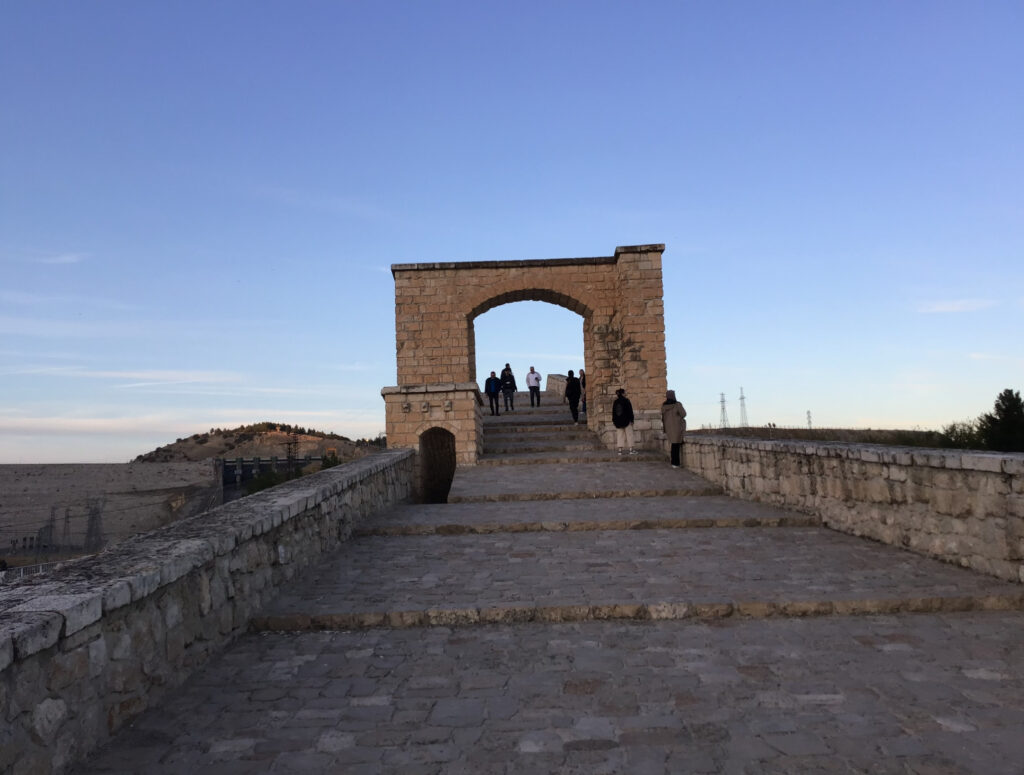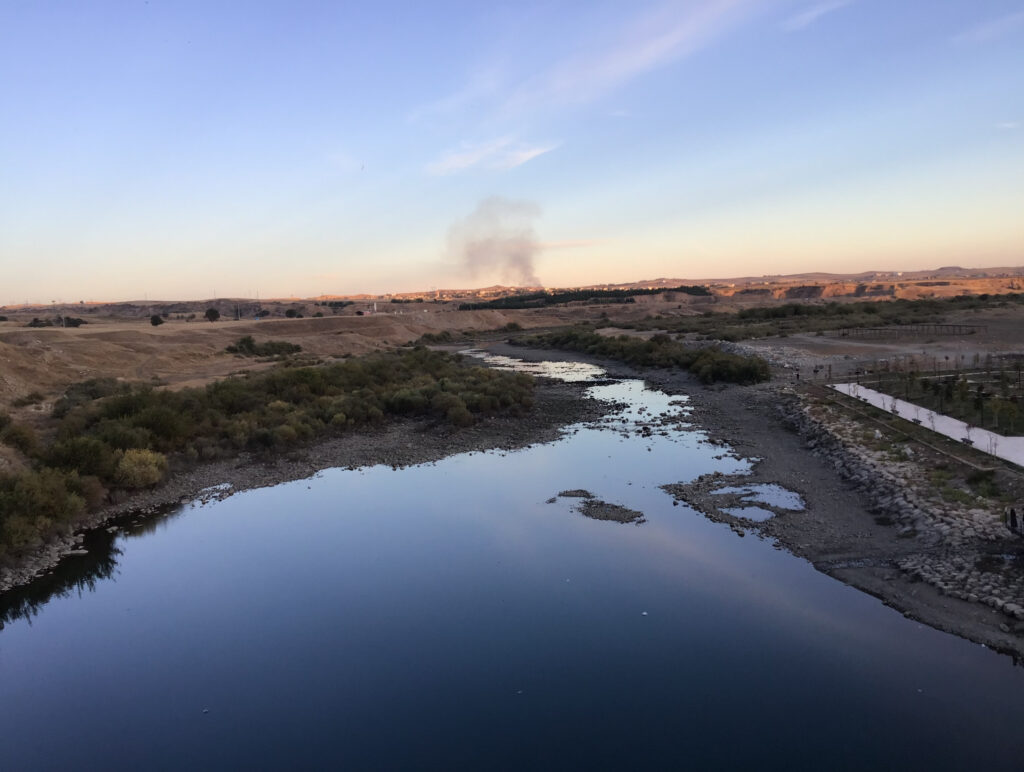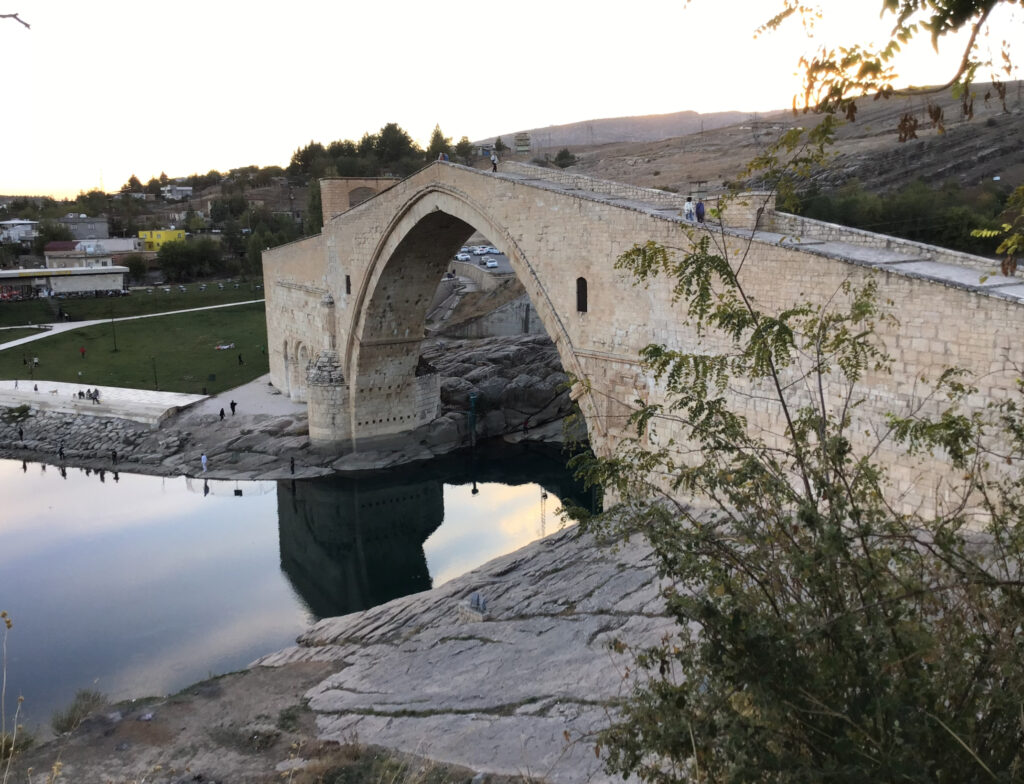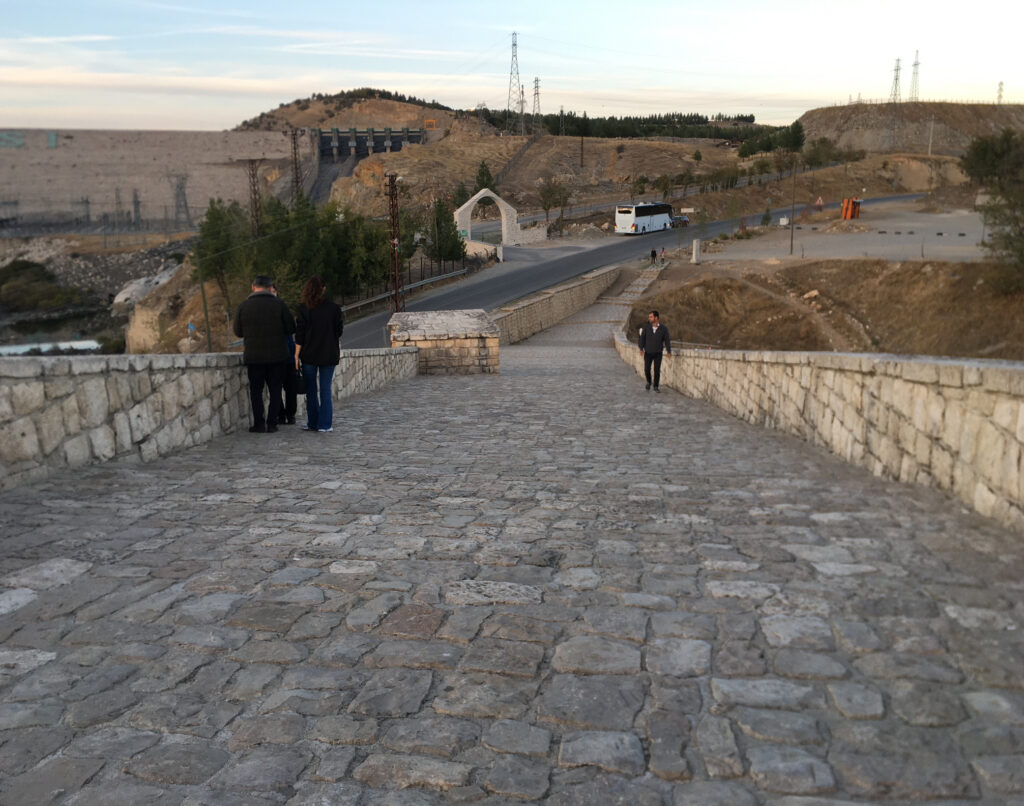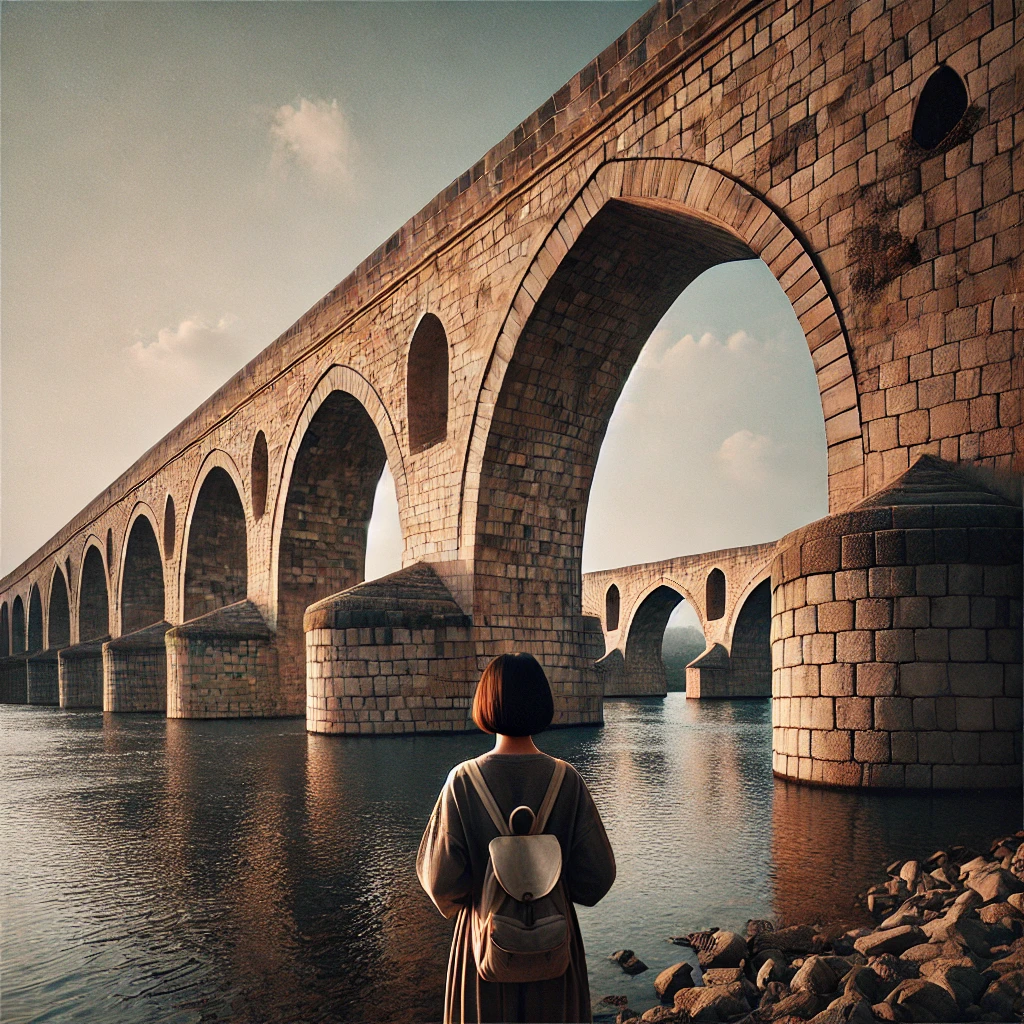ChatGPT:
Overview:
Bitlis is a city located in eastern Turkey and serves as the administrative center of Bitlis Province. Nestled in a deep, narrow valley surrounded by high mountains, the city sits at an elevation of approximately 1,400 meters (4,600 feet) above sea level. Bitlis is renowned for its rich history, cultural heritage, and significant architectural landmarks, including ancient castles, mosques, and traditional stone houses.
Origin and Early History:
The origins of Bitlis trace back to antiquity. The city’s name is believed to derive from “Bedlis” or “Badlis,” which, according to local tradition, was the name of a commander under Alexander the Great who built the original fortress in the area. Some historians suggest that the name may have Armenian roots, possibly from the word “Bagesh,” reflecting the region’s historical Armenian presence.
Throughout ancient times, Bitlis’s strategic location made it a crossroads of civilizations. It lay on important trade routes connecting Mesopotamia to the Iranian plateau and the Caucasus. The region was inhabited by various peoples, including the Urartians in the first millennium BCE, followed by the Medes, Persians, and eventually coming under Roman influence.
Medieval Period:
During the early medieval period, Bitlis became part of the Byzantine Empire before falling under Arab control following the Islamic conquests of the 7th century. The city later came under the rule of local Kurdish dynasties, such as the Marwanids and the Ayyubids, reflecting the region’s ethnically diverse and often autonomous governance.
From the 14th to the 19th centuries, Bitlis was ruled by the Kurdish Rojki (or Rüşti) dynasty, which maintained semi-independent status by acknowledging the suzerainty of larger empires while retaining local control. The city became an important center of Kurdish culture and politics during this period.
Ottoman Era:
In the early 16th century, the Ottoman Empire expanded into eastern Anatolia under Sultan Selim I. Bitlis became part of the empire but continued to enjoy a degree of autonomy under its local emirs. The Ottomans recognized the strategic importance of Bitlis and often relied on local Kurdish leaders to maintain order in the region.
In the 19th century, the Ottoman centralization policies under Sultan Mahmud II aimed to reduce the autonomy of local rulers. This led to conflicts and rebellions in Bitlis, culminating in the eventual incorporation of the city directly under Ottoman administration.
Modern History:
During World War I, Bitlis was a significant frontline between Ottoman and Russian forces. The city witnessed heavy fighting and suffered extensive destruction. The Armenian population, which had been a significant part of the city’s demographic, was profoundly affected during this period.
After the establishment of the Republic of Turkey in 1923, Bitlis was designated as the capital of Bitlis Province. The city underwent various modernization efforts but remained relatively less developed compared to western parts of Turkey.
Development:
• Economy: Bitlis’s economy has traditionally relied on agriculture and livestock, benefiting from the fertile lands in the surrounding valleys. Key agricultural products include grains, tobacco, and fruits like apricots. The city is also known for its production of honey and dairy products.
• Industry and Tourism: In recent decades, efforts have been made to develop the industrial and tourism sectors. Bitlis’s rich historical and cultural heritage, along with its natural beauty, offer significant potential for tourism. Attractions include Bitlis Castle, the Ulu Mosque, and traditional stone houses that exhibit distinctive architectural styles.
• Culture: The city is predominantly Kurdish, and Kurdish language and traditions are integral to the local identity. Bitlis also bears historical Armenian and Turkish influences, contributing to a diverse cultural tapestry. Traditional music, dance, and festivals play a significant role in community life.
• Education: Bitlis Eren University, established in 2007, provides higher education opportunities and contributes to the region’s development by fostering academic and cultural activities.
Notable Landmarks:
• Bitlis Castle: An ancient fortress believed to have been originally built by one of Alexander the Great’s generals. The castle has been rebuilt and renovated multiple times throughout history and offers panoramic views of the city.
• Ulu Mosque: Dating back to the 12th century, this mosque is an example of Seljuk architecture with intricate stone carvings and serves as a significant place of worship.
• Traditional Houses: Bitlis is known for its unique multi-story stone houses that adapt to the steep terrain of the city, reflecting traditional architectural techniques.
Geography and Climate:
Bitlis is characterized by a mountainous landscape, with the Bitlis River cutting through the city. The climate is continental, featuring cold, snowy winters and warm summers. The city’s proximity to Lake Van, the largest lake in Turkey, adds to its geographic and economic significance, offering opportunities for fishing and tourism.
Infrastructure:
Transportation links have improved over the years, connecting Bitlis to other major cities in eastern Turkey. Roads and public services have been developed to enhance the quality of life for residents and to support economic growth.
Conclusion:
Bitlis stands as a city rich in history and cultural diversity. Its development has been shaped by various civilizations and empires, each leaving an indelible mark on the city’s identity. Today, Bitlis continues to preserve its historical heritage while seeking opportunities for modernization and economic development.
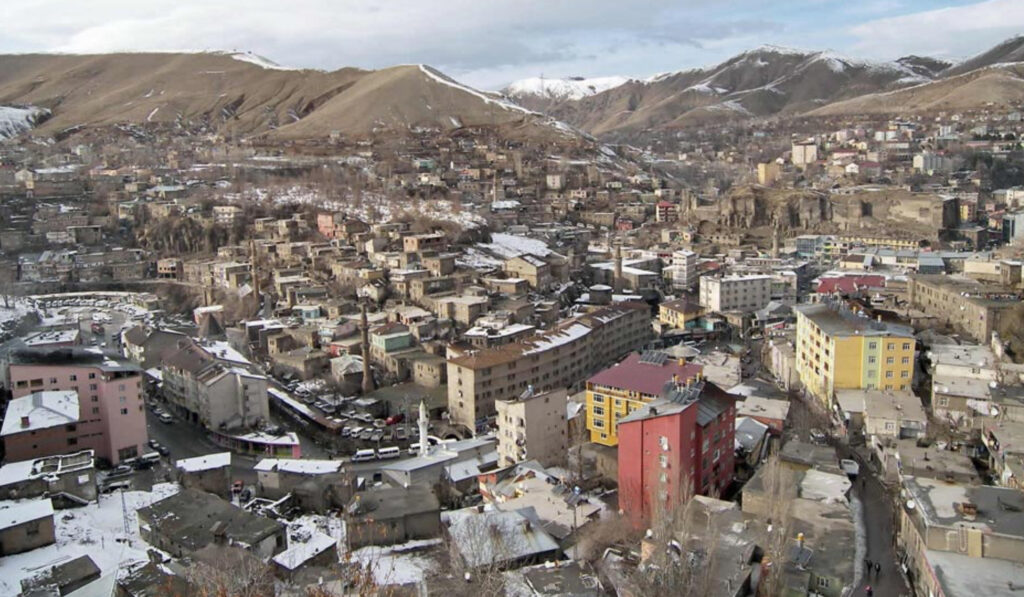
Historical Monuments and Tourist Attractions Within Bitlis City
Bitlis city, steeped in history and cultural heritage, offers a wealth of historical monuments and attractions for visitors to explore. Nestled in a deep valley surrounded by rugged mountains, the city’s unique architecture and landmarks reflect the diverse civilizations that have influenced it over the centuries. Below is a list of notable historical sites and tourist attractions located within Bitlis city.
1. Bitlis Castle (Bitlis Kalesi)
• Description: An ancient fortress perched atop a rocky hill in the city center, believed to date back to the time of Alexander the Great.
• Features: Offers panoramic views of Bitlis; showcases military architecture adapted to the natural landscape; constructed primarily from local stone; a symbol of the city’s historical significance.
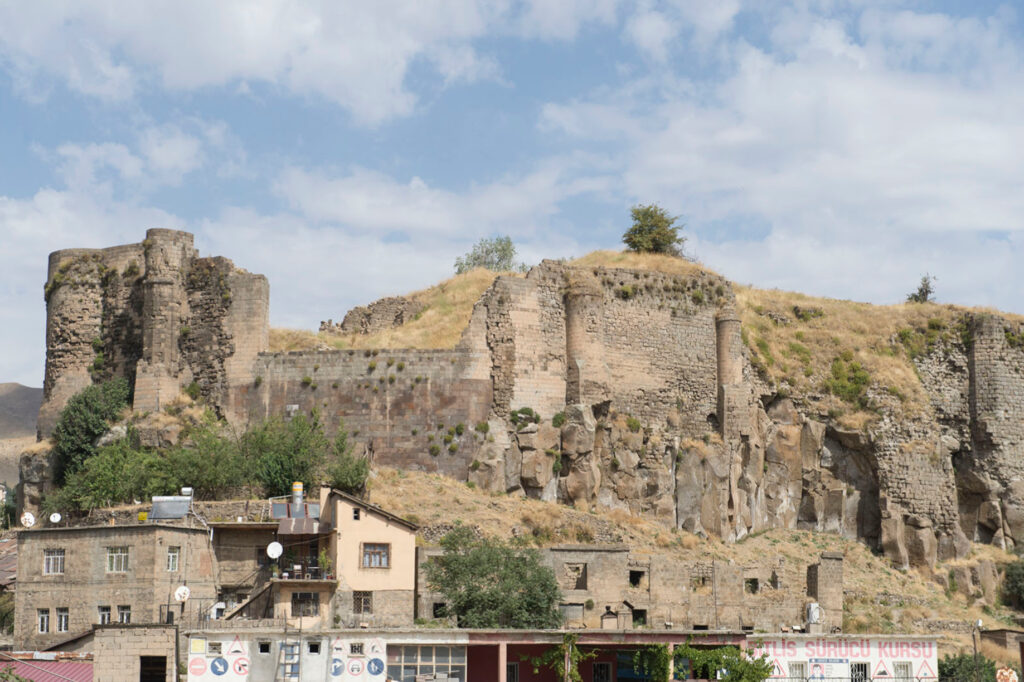
2. Ulu Mosque (Great Mosque of Bitlis)
• Description: A significant religious site from the 12th century, exemplifying Seljuk architecture.
• Features: Intricate stone carvings; large dome and pointed arches; a distinctive minaret adorned with decorative patterns; serves as an active place of worship and a historical monument.
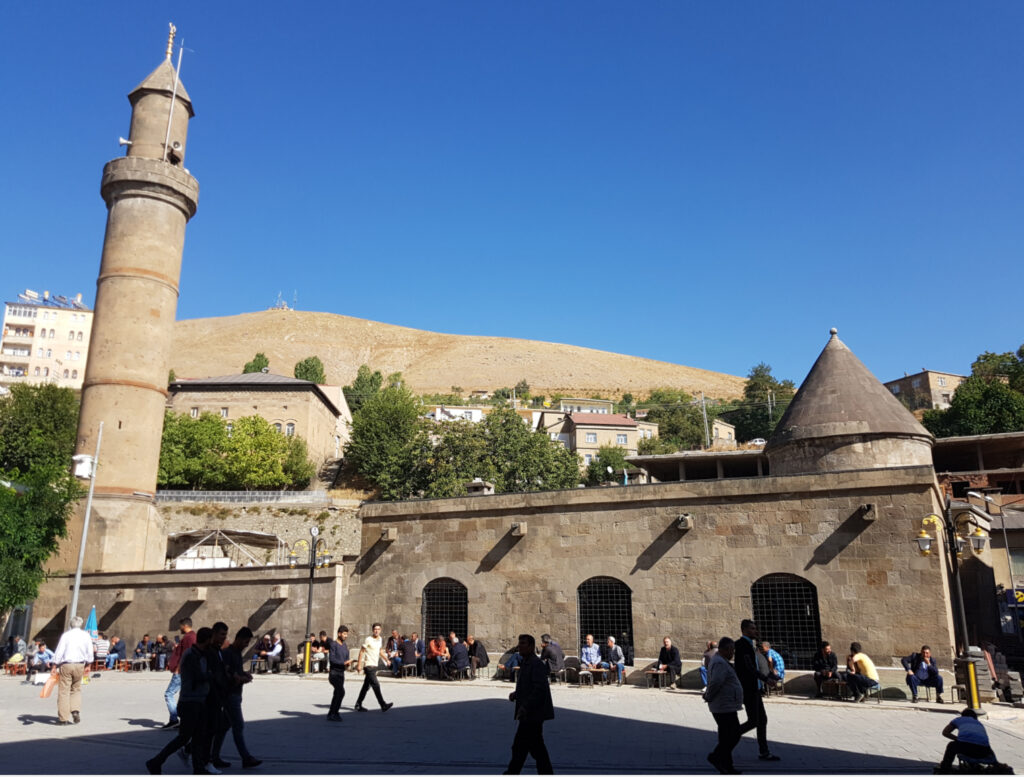
3. Şerefiye Mosque
• Description: Built during the Ottoman period in the 16th century by Emir Şeref Han.
• Features: Notable for its architectural elegance and historical significance; features a spacious courtyard, ornate interior decorations, and typical Ottoman design elements.
4. Ihlasiye Madrasah
• Description: A historical educational institution from the Seljuk era, reflecting the city’s role as a center of learning.
• Features: Central courtyard surrounded by arched halls; ornamental stonework and inscriptions; once served as a theological school and now stands as a testament to the city’s scholarly past.
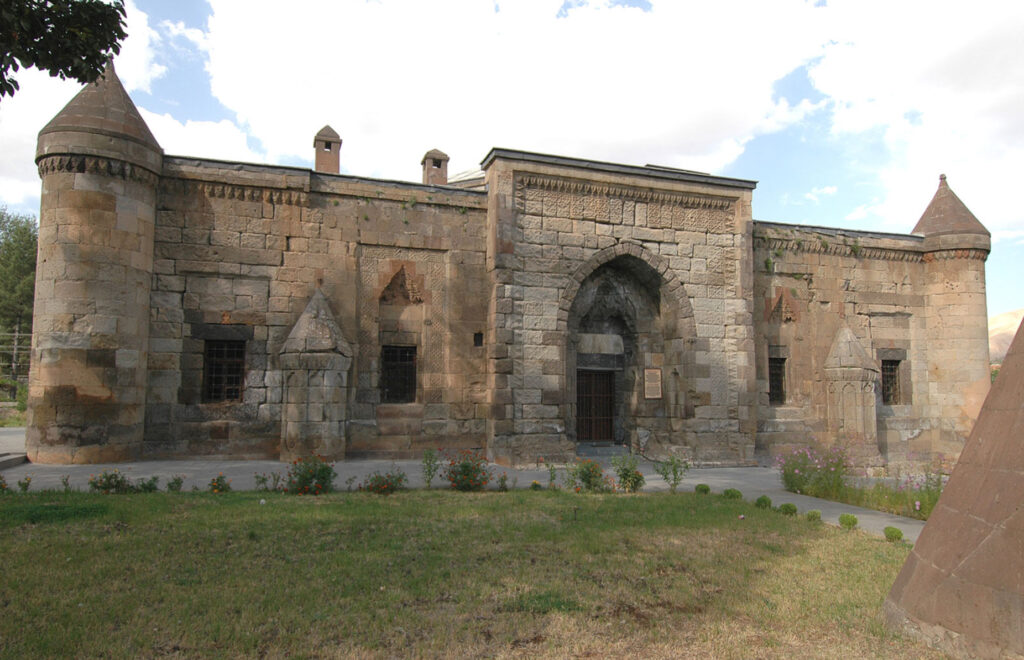
5. Traditional Stone Houses
• Description: Unique multi-story houses built on the steep slopes of Bitlis, reflecting traditional architectural techniques.
• Features: Constructed from local dark basalt stone; terraced design with flat roofs that serve as courtyards for the houses above; windows and doors often feature ornate stone carvings and wooden elements; represent the adaptation to the city’s rugged terrain.
6. Bitlis Ethnography Museum (Bitlis Etnografya Müzesi)
• Description: Housed in a historic building, the museum showcases the cultural and historical heritage of Bitlis.
• Features: Exhibits traditional clothing, jewelry, tools, and household items; displays artifacts from various periods, providing insight into the daily life and traditions of the local people.
Visiting Tips
• Guided Tours: Hiring a local guide can enhance your experience with historical insights and stories about the sites.
• Accessibility: Many attractions are within walking distance in the city center, but be prepared for hilly terrain and cobblestone streets.
• Respect Local Customs: When visiting mosques and religious sites, dress modestly and remove shoes when required; women may need to cover their heads.
• Local Cuisine: Try traditional dishes such as Büryan kebab (slow-cooked lamb), homemade cheeses, and the famous Bitlis honey.
• Shopping: The bazaar is an excellent place to purchase authentic souvenirs, including handmade carpets, kilims, pottery, and locally produced textiles.
• Photography: Always ask for permission before photographing people, especially in markets and religious sites.
Conclusion
Bitlis city is a destination rich in history and cultural diversity. Its historical monuments and attractions offer a unique opportunity to explore the legacies of the civilizations that have shaped it. From ancient castles and mosques to traditional houses and bustling bazaars, Bitlis invites visitors to immerse themselves in its storied past and vibrant present. Whether you’re a history enthusiast, a cultural explorer, or simply seeking the charm of an ancient city, Bitlis provides a memorable experience.
Additional Information
• Climate: Bitlis experiences cold, snowy winters and warm summers. The best times to visit are spring and autumn when the weather is mild.
• Transportation: The city is accessible by road, with bus services connecting it to major cities. Within the city, walking is a practical way to explore, but taxis are also available.
• Accommodation: Bitlis offers a range of accommodations, from hotels to guesthouses, catering to different budgets.
• Language: While Turkish is the official language, Kurdish is widely spoken. Learning a few basic phrases can enhance your interaction with locals.
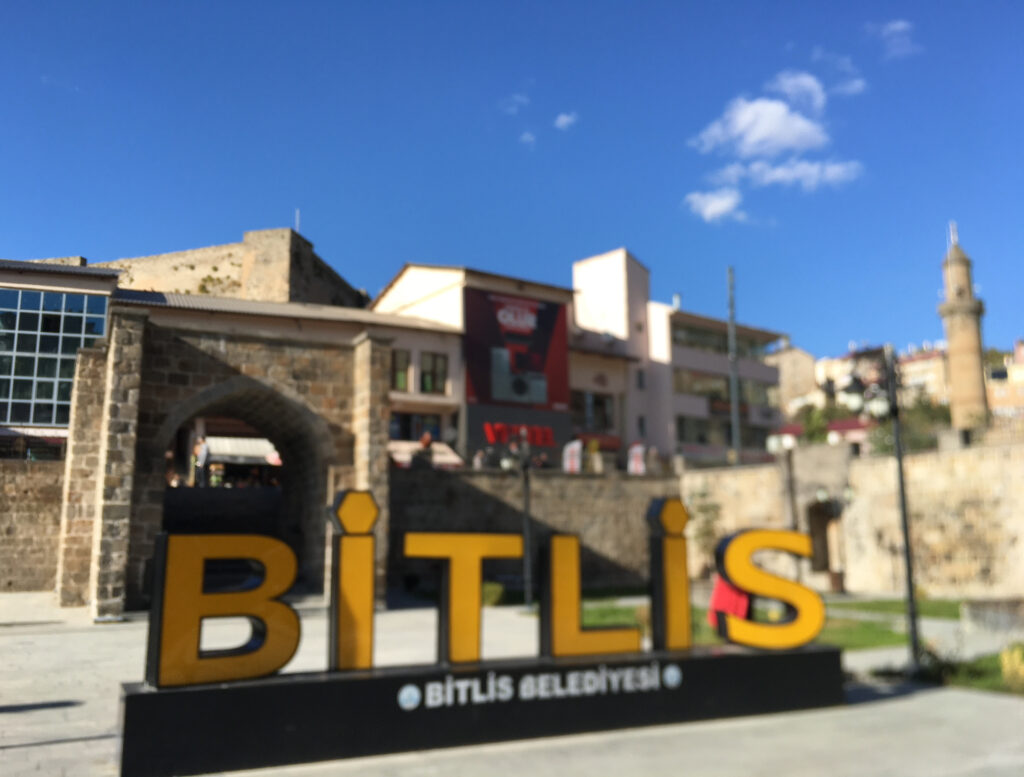
Malabadi Bridge
Malabadi Bridge: Origin and History
Overview
The Malabadi Bridge (Turkish: Malabadi Köprüsü) is a historic stone arch bridge located near the town of Silvan in the Diyarbakır Province of southeastern Turkey. Spanning the Batman River, a tributary of the Tigris River, the bridge is renowned for its impressive architecture and engineering. Constructed in the 12th century, it stands as one of the most significant examples of medieval bridge construction in the region.
Origin and Construction
• Date of Construction: The Malabadi Bridge was built in 1147 AD during the Artuqid dynasty, a Turkoman dynasty that ruled parts of eastern Anatolia and northern Mesopotamia in the 11th and 12th centuries.
• Commissioned By: The bridge was commissioned by Timurtash bin Il-Gazi, a member of the Artuqid ruling family. The Artuqids were known for their patronage of architecture, art, and engineering projects.
• Purpose: The bridge was constructed to facilitate trade and travel across the Batman River, which was a critical crossing point on the trade routes connecting the Middle East with Anatolia and beyond. It served as a vital link for merchants, travelers, and armies.
Architectural Features
• Design and Structure:
• Main Arch Span: The bridge features a single, large pointed arch with a span of approximately 38.6 meters (about 126.6 feet), which was one of the largest arch spans of its time.
• Total Length: The entire bridge measures around 150 meters (about 492 feet) in length.
• Width: It has a width of approximately 7 meters (about 23 feet), allowing for the passage of caravans and travelers.
• Construction Materials: Built primarily from local limestone and mortar, the bridge showcases advanced stone masonry techniques. The use of durable materials has contributed to its longevity.
• Unique Features:
• Chambers and Niches: Embedded within the bridge are small chambers or rooms that were used by travelers as shelters or resting places. These spaces provided protection against harsh weather and potential threats.
• Decorative Elements: The bridge includes ornamental carvings, such as reliefs depicting human figures, animals, and geometric patterns. These decorations reflect the Artuqid artistic style and add to the bridge’s aesthetic appeal.
Historical Significance
• Engineering Achievement: The Malabadi Bridge is considered an engineering marvel of the medieval period. Its large arch span and structural integrity demonstrate the advanced knowledge of geometry and engineering possessed by the builders.
• Cultural Heritage: The bridge embodies the synthesis of various cultural influences, including Seljuk, Persian, and local Anatolian traditions. It represents the architectural innovation and artistic expression of the Artuqid dynasty.
• Economic Impact: By facilitating the crossing of the Batman River, the bridge played a crucial role in promoting commerce, enabling the movement of goods and people, and contributing to the economic prosperity of the region.
Restoration and Preservation
• Historical Repairs: Over the centuries, the bridge has undergone several restorations due to damage from natural wear, floods, and other events. Notable restoration efforts were made in the 1950s and early 2000s to preserve its structural integrity.
• UNESCO Tentative List: The Malabadi Bridge was submitted to UNESCO’s Tentative List for consideration as a World Heritage Site. This recognition highlights its outstanding universal value and importance to cultural heritage.
• Preservation Efforts: Ongoing conservation projects aim to maintain the bridge’s condition, prevent deterioration, and promote it as a historical monument. These efforts involve collaboration between local authorities, historians, and conservation experts.
Modern Relevance
• Tourist Attraction: Today, the Malabadi Bridge attracts visitors from around the world interested in history, architecture, and engineering. It serves as a significant cultural and historical landmark in southeastern Turkey.
• Cultural Symbol: The bridge is a source of regional pride and is often featured in literature, music, and art. It symbolizes the rich historical tapestry of the area and the achievements of past civilizations.
• Educational Value: The bridge provides an opportunity for educational programs focusing on medieval engineering, architecture, and history. It serves as a tangible link to the past for scholars and students alike.
Visiting Information
• Location: The bridge is located approximately 23 kilometers (about 14 miles) northeast of the city of Silvan and around 65 kilometers (about 40 miles) east of Diyarbakır city.
• Accessibility: Accessible by road, visitors can reach the bridge via the Diyarbakır-Bitlis highway. Signage directs travelers to the site, and parking is available nearby.
• Facilities: While facilities may be limited, local vendors often sell refreshments. It is advisable to bring water and wear comfortable walking shoes.
• Best Time to Visit: Spring and autumn offer mild weather conditions, making these seasons ideal for visiting. Summers can be hot, and winters may bring rain or snow.
Architectural Analysis
• Structural Design: The pointed arch design is significant for its ability to distribute weight more efficiently than a semicircular arch. This innovation allowed for a wider span and a stronger structure capable of withstanding the forces exerted by the river and the bridge’s own weight.
• Engineering Techniques: The builders employed advanced techniques, such as precise stone cutting and fitting, to create a durable and stable bridge. The use of relieving arches and spandrels helped reduce the load on the main arch.
• Aesthetic Considerations: The inclusion of decorative reliefs and the harmonious proportions of the bridge reflect an appreciation for beauty alongside functionality. The bridge’s design complements the natural landscape, creating a visually striking monument.
Historical Context
• Artuqid Dynasty: Ruling from the late 11th to the early 15th century, the Artuqids were known for their patronage of the arts, architecture, and science. They contributed significantly to the cultural development of southeastern Anatolia.
• Trade Routes: During the medieval period, the region was a nexus of trade routes connecting the Middle East, Anatolia, and Europe. Infrastructure like the Malabadi Bridge was essential for facilitating commerce and cultural exchange.
• Cultural Interactions: The bridge stands as a testament to the multicultural environment of the time, where Turkic, Kurdish, Arab, Persian, and Armenian influences converged. This blend is evident in the artistic and architectural elements of the bridge.
Legends and Folklore
• Local Tales: The Malabadi Bridge is associated with various legends and stories passed down through generations. One popular tale speaks of a master builder who, in despair over the possibility of the bridge collapsing, sacrificed himself to ensure its stability. Such stories add to the cultural richness surrounding the bridge.
Conservation Challenges
• Environmental Factors: Exposure to the elements, including water erosion from the river and temperature fluctuations, poses ongoing challenges to the bridge’s preservation.
• Human Impact: Increased tourism and nearby development can lead to wear and potential damage. Responsible tourism practices are encouraged to protect the site.
• Conservation Efforts: Preservation initiatives focus on structural reinforcement, cleaning of the stone surfaces, and prevention of vegetation growth that can harm the masonry.
Conclusion
The Malabadi Bridge is not only an architectural and engineering masterpiece but also a symbol of the historical and cultural legacy of the region. Its impressive design and enduring presence offer insight into the technological advancements and aesthetic values of the medieval period. Preserving this monument ensures that future generations can appreciate and learn from this remarkable piece of history.
Recommendations for Visitors
• Photography: The bridge offers excellent opportunities for photography, especially during sunrise or sunset when the lighting enhances its features.
• UNESCO World Heritage Centre: Check for updates on the bridge’s status and any related cultural heritage initiatives.
Final Thoughts
Visiting the Malabadi Bridge offers a journey back in time to an era of remarkable architectural achievement and cultural flourishing. Its endurance through the centuries serves as a powerful reminder of humanity’s capacity for innovation and artistry.
